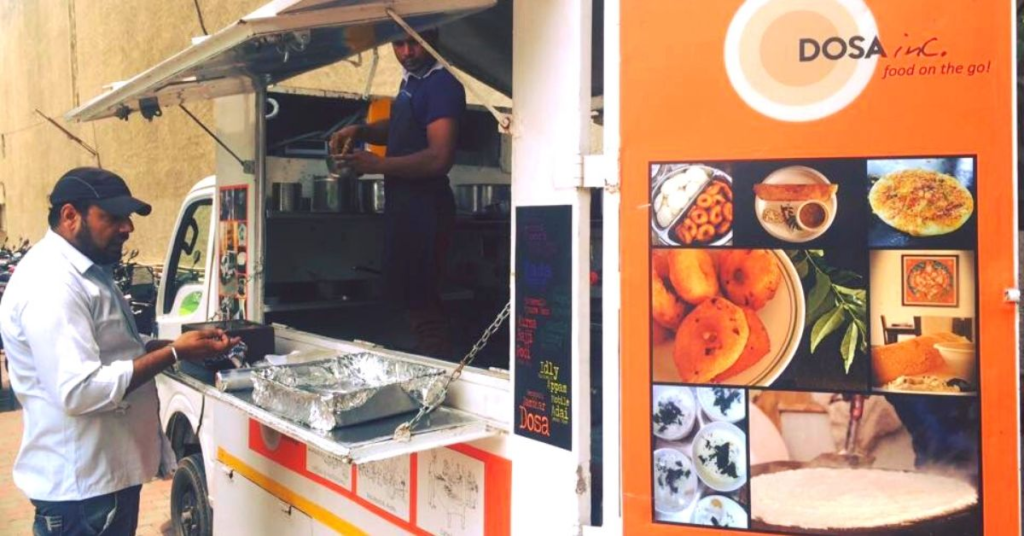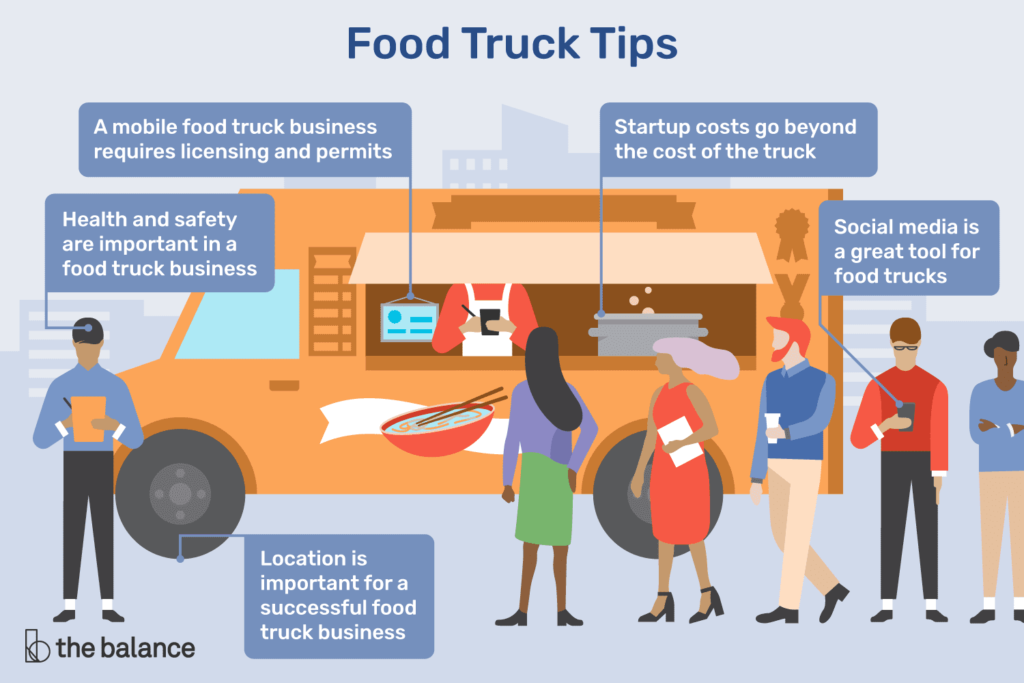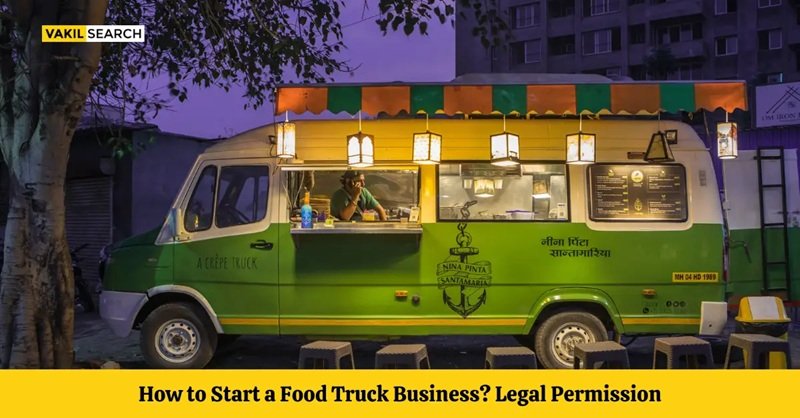How to Start a Food Truck Business is an exciting venture for culinary entrepreneurs who want to serve delicious food with the freedom of mobility. It combines the passion for cooking with entrepreneurial spirit, offering a low-cost alternative to opening a traditional brick-and-mortar restaurant. If you’re wondering how to start a food truck business, this guide will walk you through the key steps to turn your dream into reality.
Why Start a Food Truck Business?
Food trucks are gaining popularity due to their affordability, flexibility, and unique customer experiences. The startup costs are significantly lower than opening a restaurant, and food trucks can move to where the demand is—festivals, business districts, college campuses, and more.
Step-by-Step Guide to Starting a Food Truck Business

Step 1: Research the Market
Before investing in a food truck, conduct thorough market research to understand your potential customer base, existing competition, and popular food trends in your area.
- Identify your target audience—office workers, students, event-goers, etc.
- Analyze competitors—what they’re doing well and where they’re lacking.
- Explore food truck regulations in your city or state.
Important: Each city has different licensing requirements, zoning laws, and health regulations for mobile food vendors.
Step 2: Create a Business Plan
A solid business plan is essential to guide your startup journey and attract investors or loans.
Your business plan should include:
- Business overview and concept
- Menu ideas and pricing strategy
- Market analysis
- Marketing plan
- Startup and ongoing costs
- Projected income and break-even analysis
Tip: Keep your concept simple but unique. Focus on a few items and execute them exceptionally well.
Step 3: Choose the Right Food Truck
You have two main options: buy a new truck, buy a used one, or lease.
Key factors to consider:
- Size and layout
- Kitchen equipment needs
- Storage and refrigeration capacity
- Maintenance and fuel efficiency
Costs can range from $50,000 to $200,000 depending on customization. Don’t forget to include the cost of wrapping your truck with your branding.
Step 4: Secure Licenses, Permits, and Insurance
Operating a food truck legally requires various licenses and permits, which vary by location.
Common requirements:
- Business license
- Food service license
- Mobile vendor permit
- Health department certification
- Vehicle registration and inspection
You’ll also need business insurance for protection against liabilities, damages, and employee injuries.
Pro tip: Check with your local health department and small business administration for specific guidelines.
Step 5: Design a Delicious, Efficient Menu
Your menu should reflect your brand and be optimized for quick preparation and easy handling. Keep it simple, cost-effective, and unique to stand out.
Consider:

- Portion size and pricing
- Ingredient sourcing
- Prep and cooking time
- Packaging and presentation
Highlight your best-sellers and offer seasonal or limited-time items to keep customers coming back.
Step 6: Find Great Locations
The success of a food truck depends heavily on location.
Best places to park:
- Business districts during lunch hours
- Festivals, fairs, and events
- College campuses and schools
- Breweries and pop-up markets
Important: Always get location permissions and understand parking regulations. You may need permits for specific areas or event registrations.
Step 7: Market Your Food Truck
Marketing helps you build a loyal customer base. Use both online and offline strategies to spread the word.
Digital marketing tactics:
- Create a website with your menu and schedule
- Post on social media (Instagram, Facebook, TikTok)
- Register with food truck apps like Roaming Hunger and Street Food Finder
- Collect customer reviews and share testimonials
Also, consider local advertising, flyers, and loyalty programs to boost visibility.
Tip: Post your daily locations and menu specials on social media to attract followers.
Step 8: Hire the Right Team (if needed)
As your business grows, you may need help with cooking, serving, or managing operations. Hire passionate, reliable staff with food service experience.
Consider roles such as:
- Cook or kitchen assistant
- Cashier or server
- Marketing assistant (even part-time)
Training is crucial to ensure consistency in food quality and customer service.
Estimated Startup Costs
Here’s a rough breakdown of what it might cost to launch a food truck:
| Item | Estimated Cost |
|---|---|
| Food Truck | $50,000 – $100,000 |
| Equipment and Upgrades | $10,000 – $20,000 |
| Permits and Licenses | $2,000 – $5,000 |
| Insurance | $2,000 – $4,000 |
| Marketing and Branding | $1,000 – $3,000 |
| Initial Inventory | $1,000 – $3,000 |
| Miscellaneous | $2,000 – $4,000 |
Total Estimated Cost: $70,000 – $140,000
Common Challenges and How to Overcome Them

- Weather dependence: Have indoor options during bad weather or partner with local businesses.
- Competition: Differentiate with creative branding and superior food quality.
- Mechanical issues: Regularly maintain your truck to avoid breakdowns.
- Health inspections: Always follow food safety guidelines and keep records up to date.
Final Thoughts
How to Start a Food Truck Business can be incredibly rewarding with the right planning and dedication. By researching your market, developing a unique concept, and delivering excellent service, you can build a profitable and enjoyable venture.
Key takeaway: Be prepared, stay flexible, and always focus on quality food and customer satisfaction.
Disclaimer
This article is for informational purposes only and does not constitute legal, financial, or business advice. Before starting your food truck business, consult with legal and financial professionals and check local laws and regulations to ensure compliance with all necessary requirements, licenses, and permits specific to your location.










